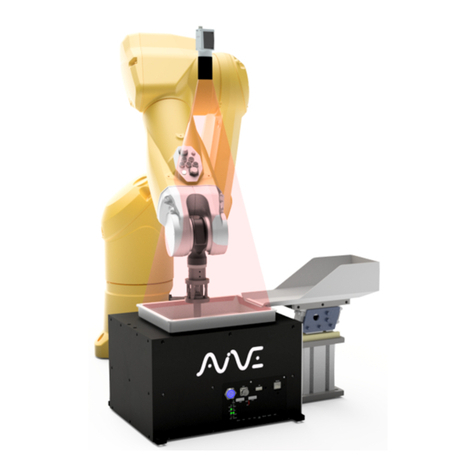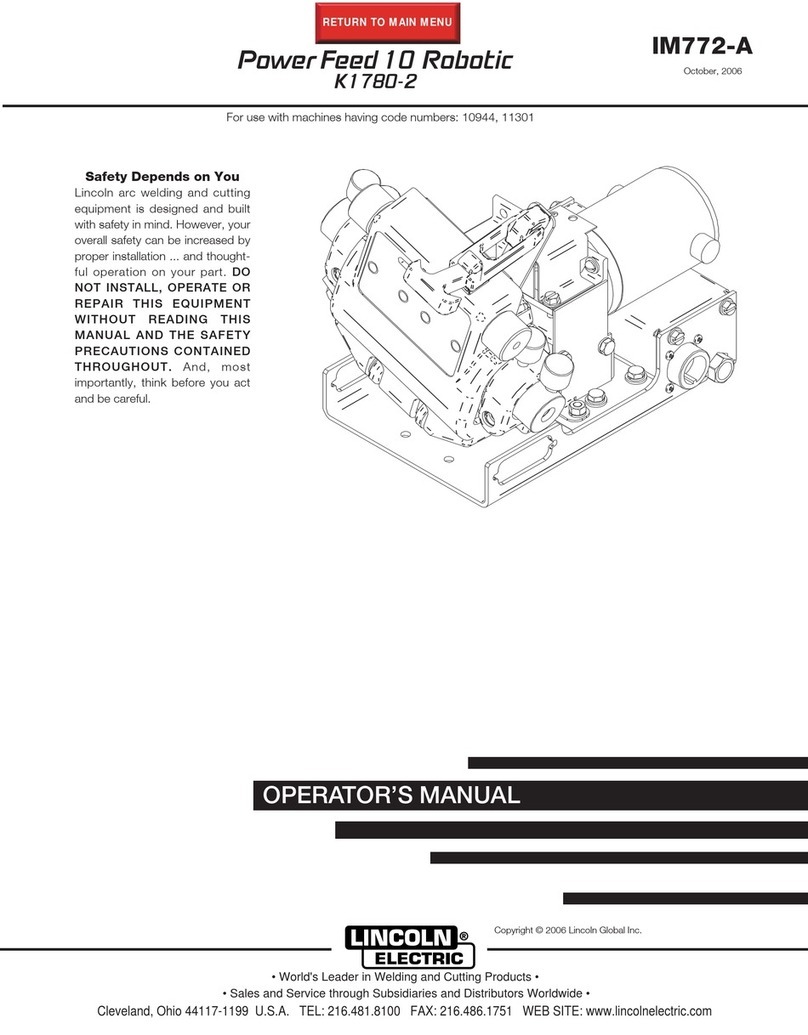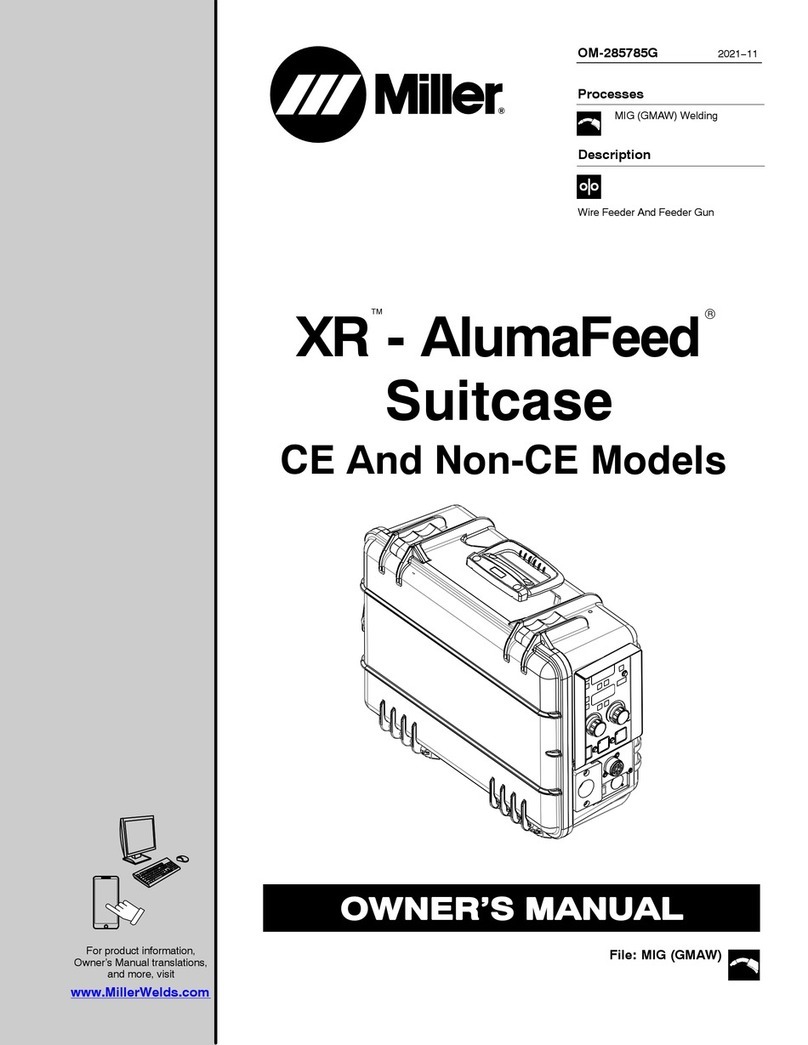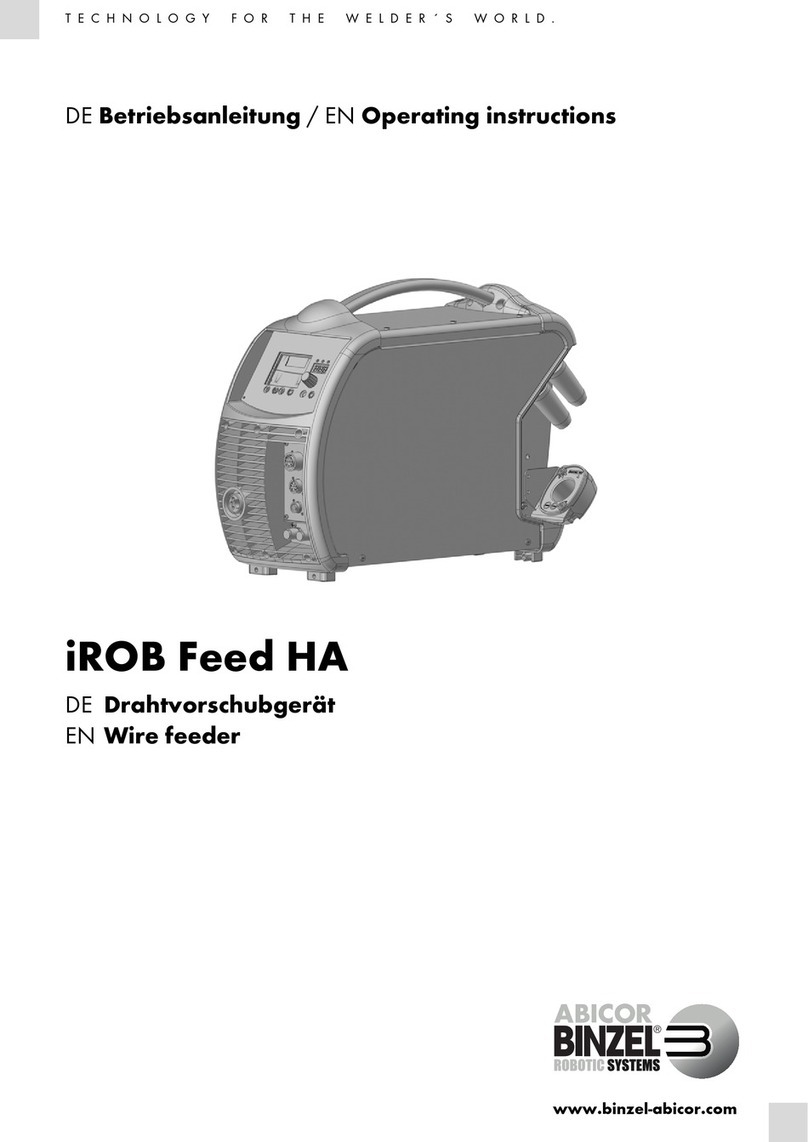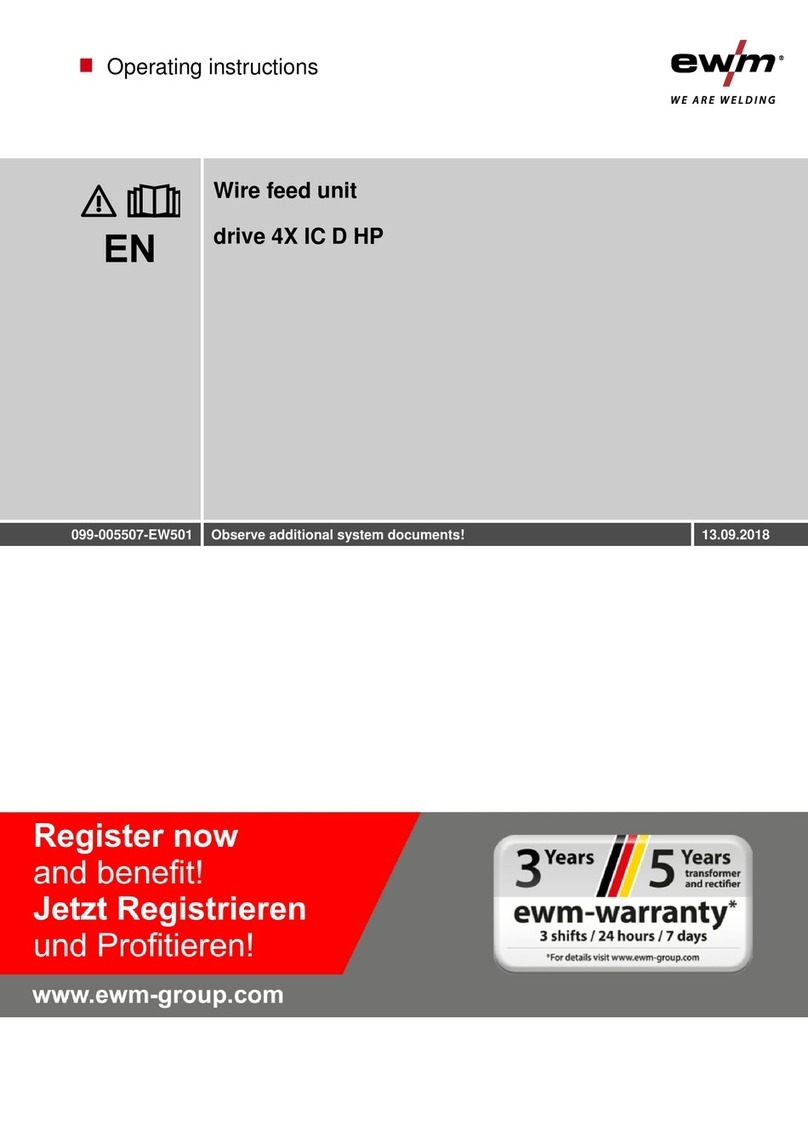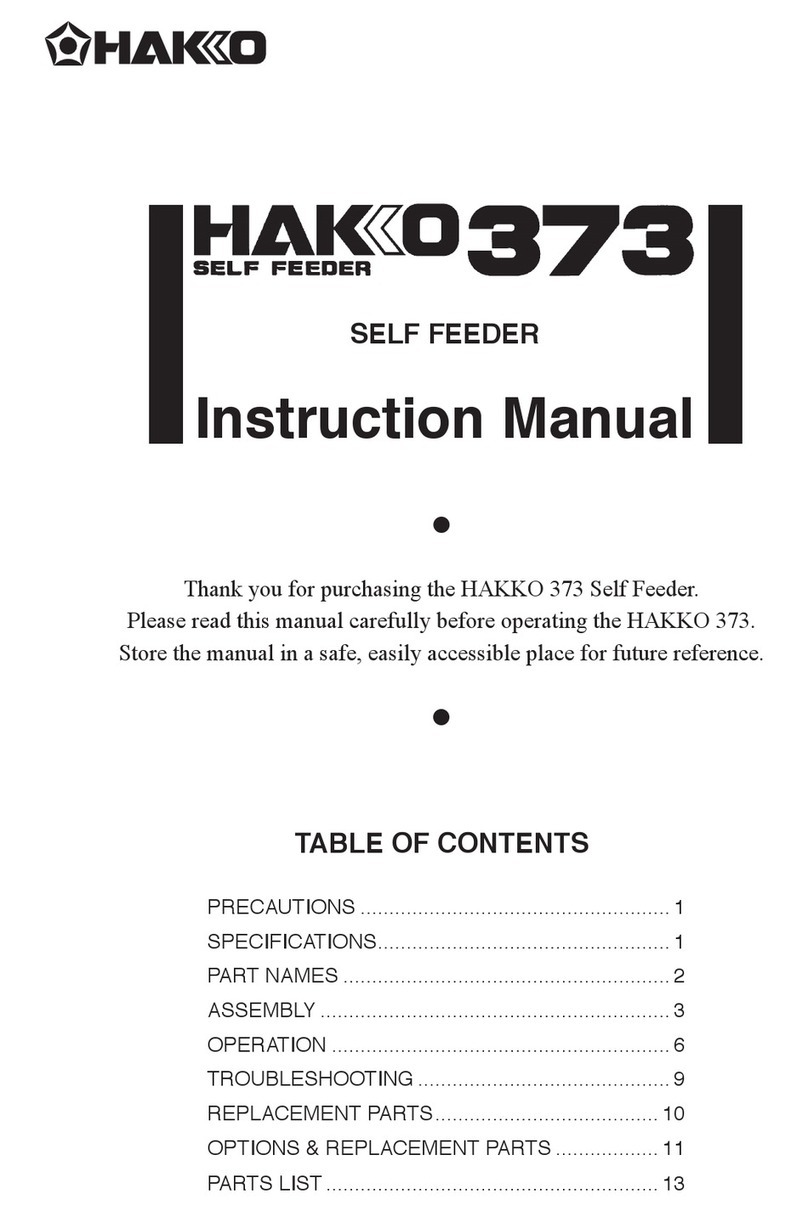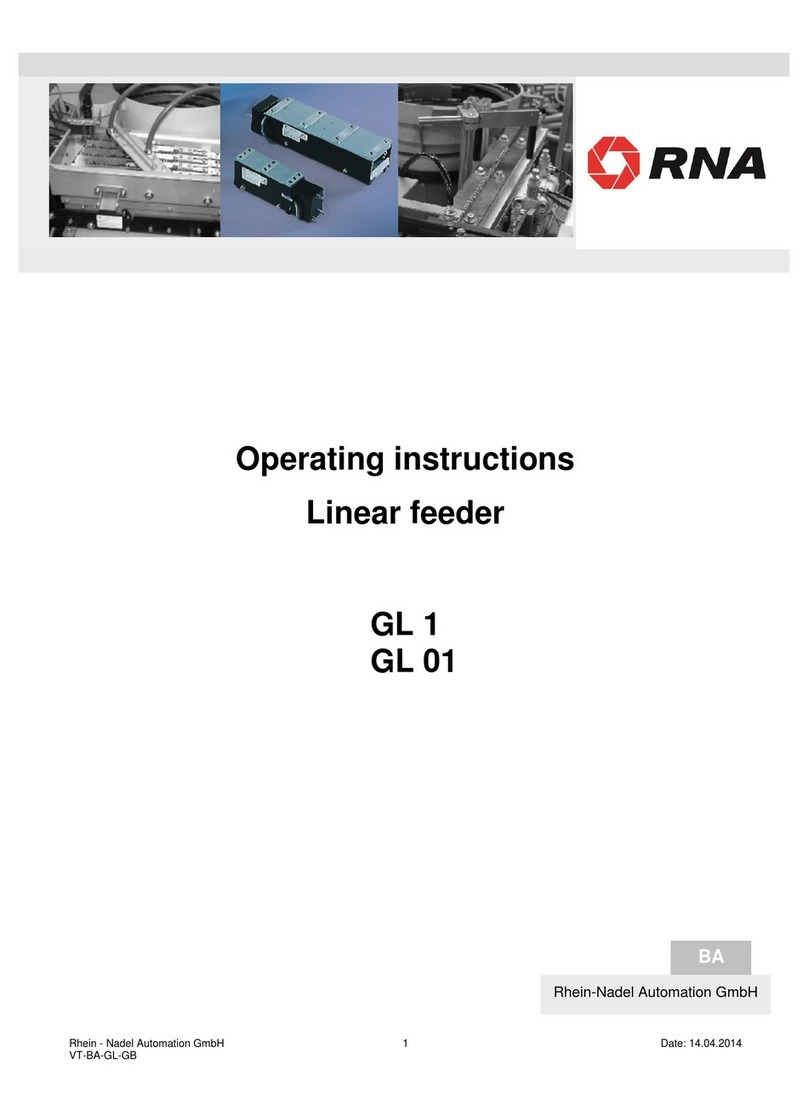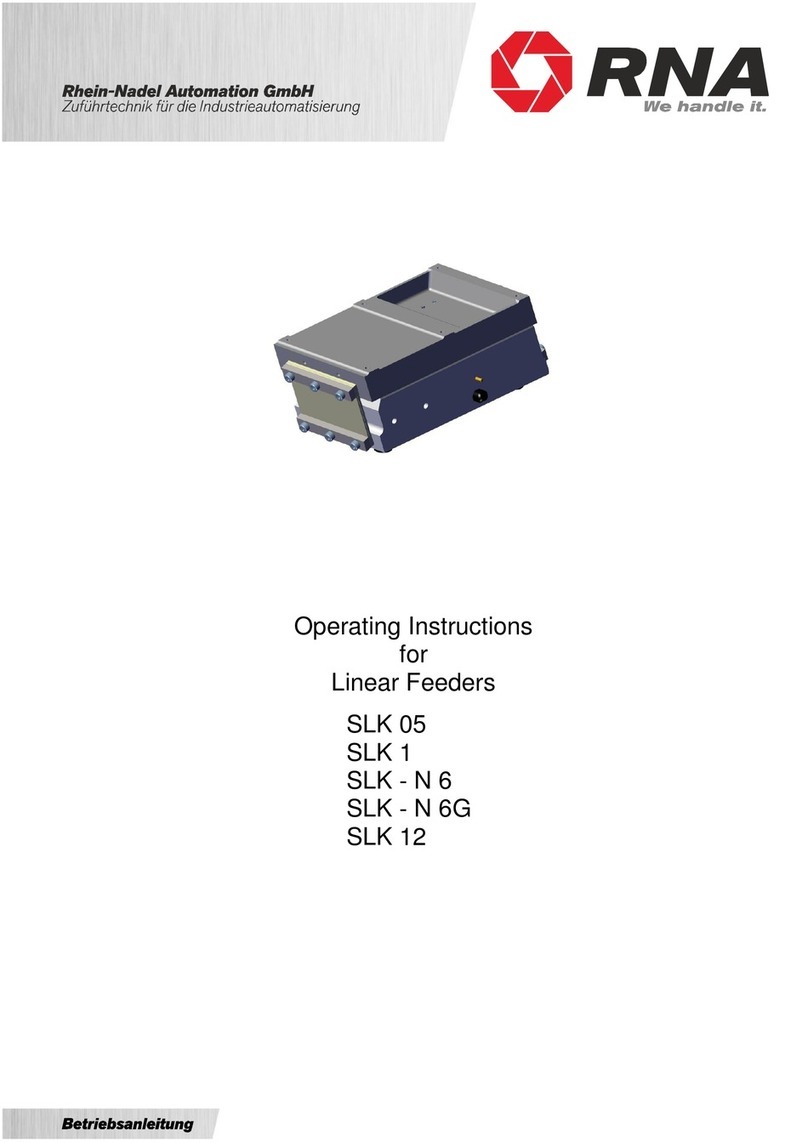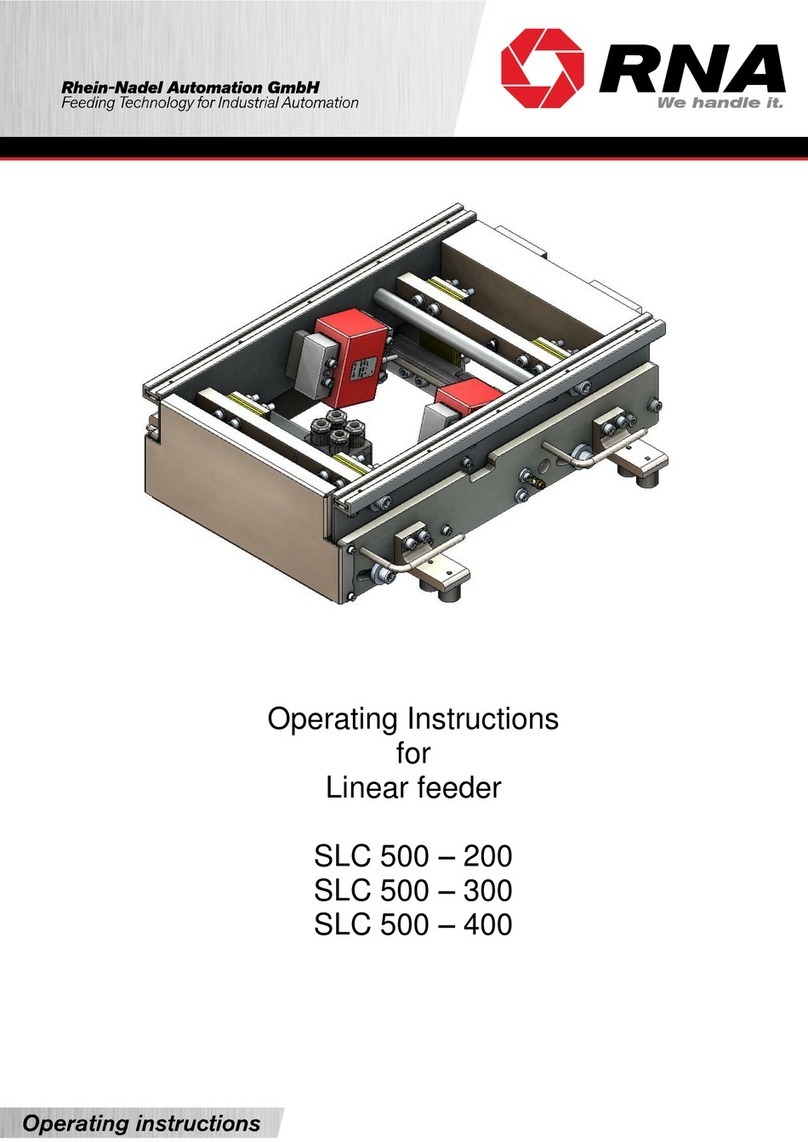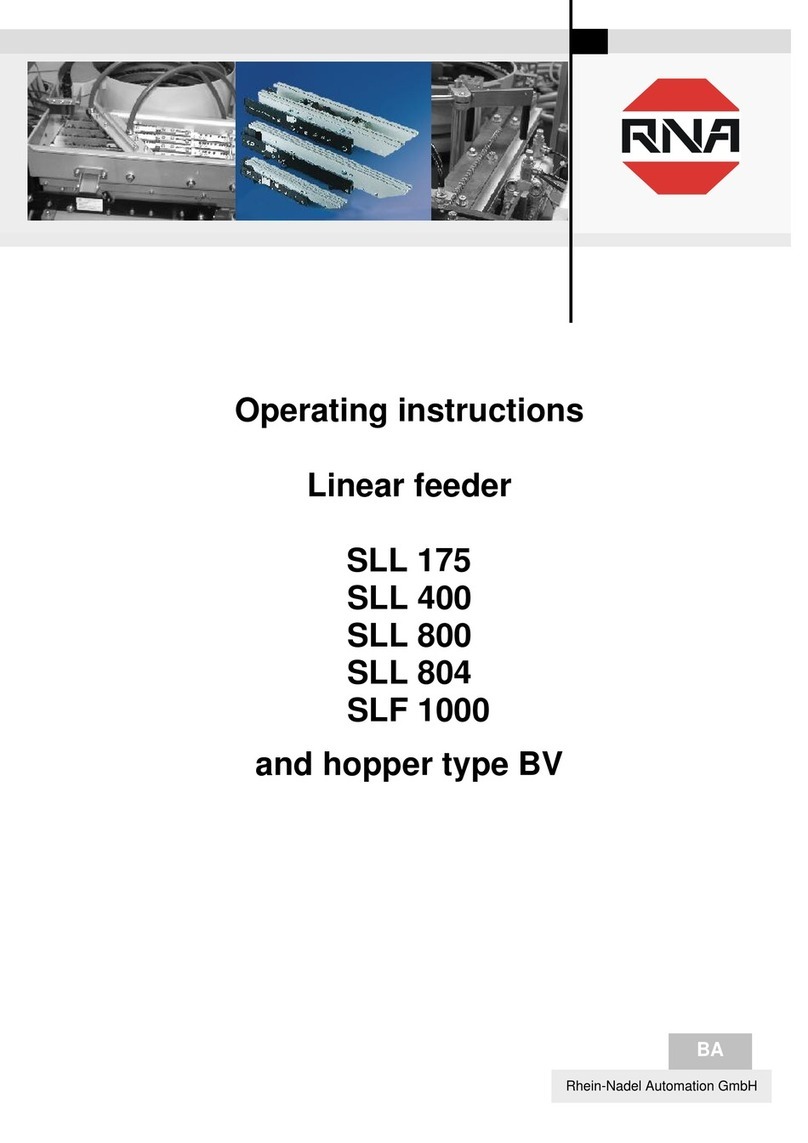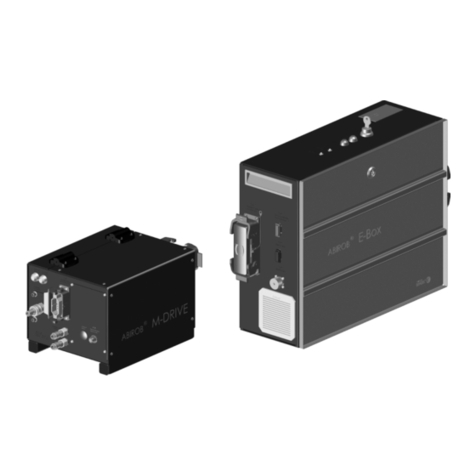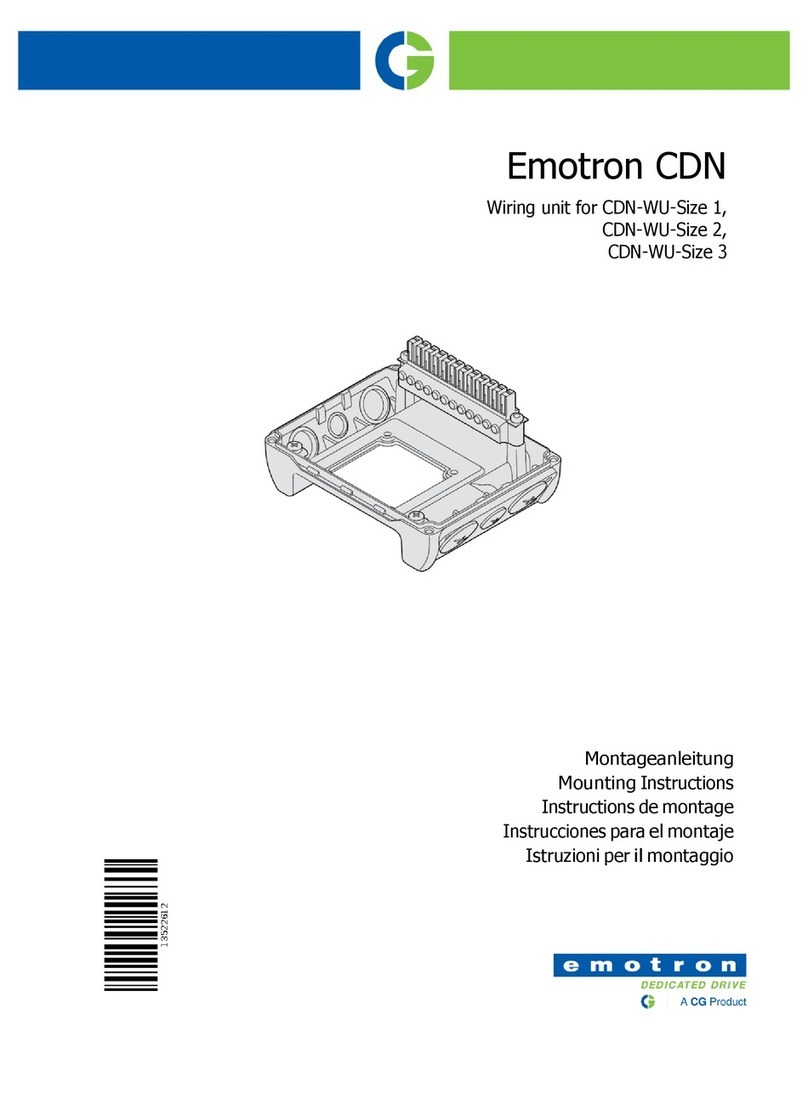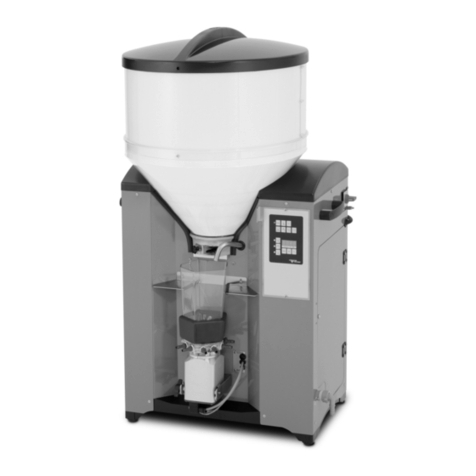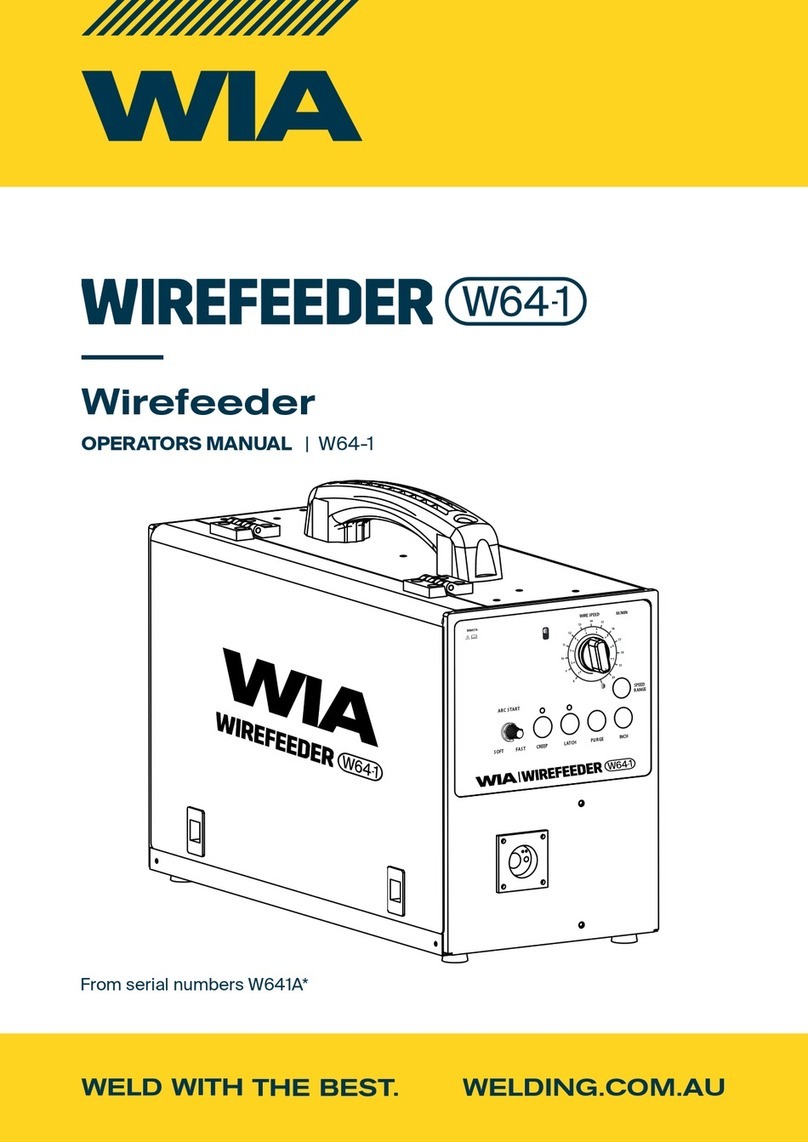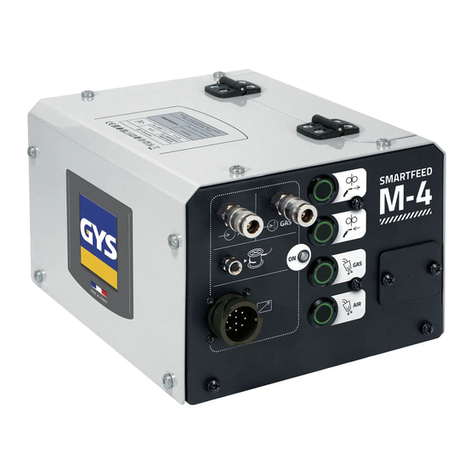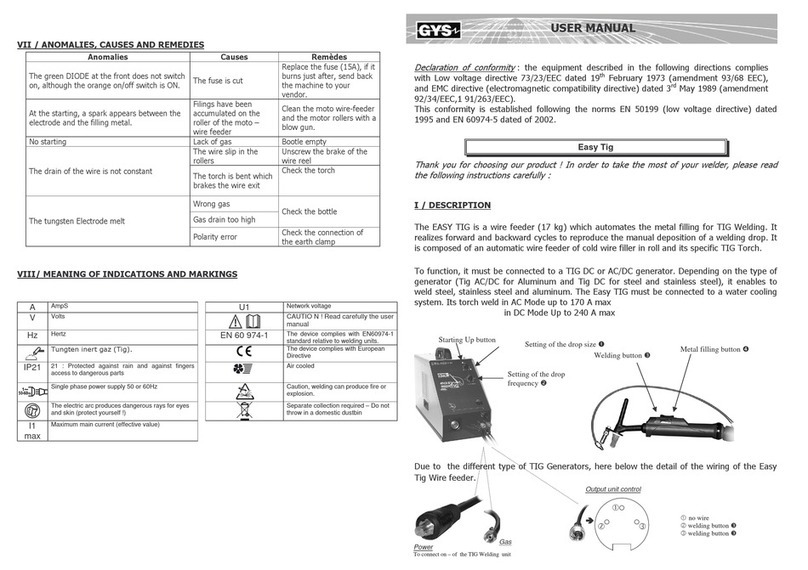Rhein-Nadel Automation GmbH 7
VT-MA-STS-EN_2019 / 11.03.2019 SJ
Equipment user's duties
Commissioning, retooling, maintenance and repair work shall be performed by qualified and authorized personnel on-
ly.
We distinguish between four qualification levels:
Qualified personnel
refers to persons who are familiar with installation, start-up and operation of the step feeder. Their qualifications are
appropriate for their activities.
Authorized personnel
refers to qualified personnel that has been assigned a clearly defined task by the user of the step feeder.
Qualified electrical worker
According to IEC 364 and DIN VDE 0105 Part 1, the term 'qualified electrical worker' refers to persons who, through
their professional training, know-how and experience and through their knowledge of applicable standards are able to
assess the work assigned to them and to recognize potential hazards.
Instructed person
According to IEC 364 and DIN VDE 0105 Part 1, the term 'instructed person' refers to persons who have been in-
structed in the tasks assigned to them by a qualified electrical worker. These persons have also been briefed on po-
tential dangers resulting from inappropriate behaviour, and on the requisite guards and precautions to be used/taken.
2.1. Applicable directives and standards
The step feeder has been manufactured in accordance with the following directives:
•EC Machinery Directive 2006/42/EC
•EC Low-Voltage Directive 2014/35/EU
•Electromagnetic Compatibility Directive 2014/30/EU
We assume that our product will be incorporated into a stationary machine. The requirements of the EMC Directive
must be satisfied by the user.
The applicable standards are specified in the Declaration of Incorporation.
3. Design and functional description of step feeders
Fill the parts to be conveyed (bulk products) into hopper (5). Please observe the filling quantity indicated on the hop-
per. In the hopper the parts are transferred to the step plate of the step frame. The step frames (2) and (3) oscillate up
and down in reciprocating manner between the side panels of the base frame (1). The parts are moved up by the first
plate. Due to the incline of the feeder and the projection of the steps involved, parts are transferred from one step plate
to the next plate when one step frame reaches the top of its motion (reversal point), at which point the other frame is at
the bottom of its motion. The parts are now moved up by this step plate and transferred to the next step plate etc. until
the parts exit the step frame at the topmost point. The parts exiting the step feeder slide down a chute to the down-
stream equipment.
Control of the step feeder is effected, depending on motor type, by motor protection breaker or electronic control de-
vices.




